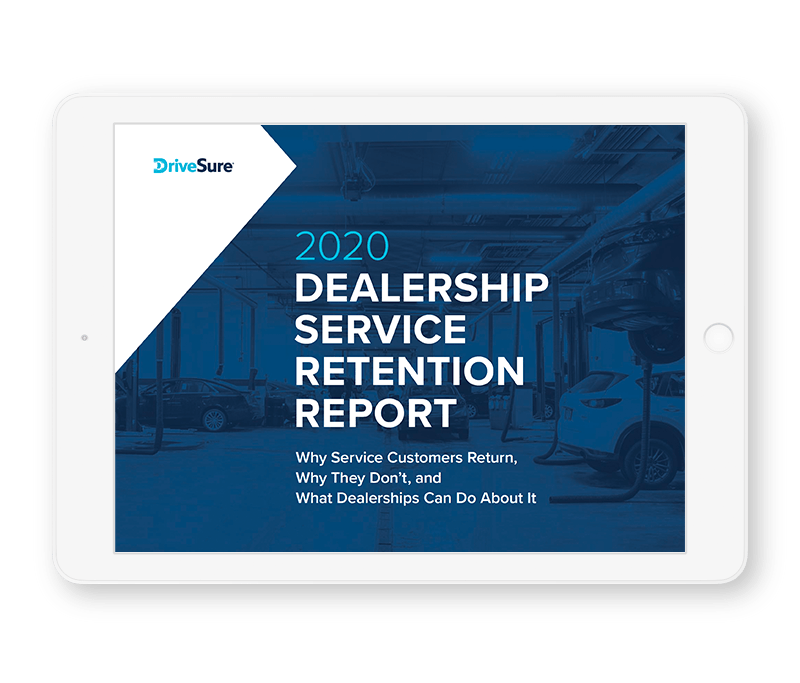Most new car dealerships know that getting customers to return for service is critical to success — both for maximizing fixed ops profits, and for generating new car sales through repeat buyers. After all, the service and parts department accounts for 49.6% of the dealership’s gross profits, according to NADA.
Knowing the importance and strong connection of the service department to the dealer’s bottom line, DriveSure recently conducted a survey to better understand why vehicle owners return for service—and why they don’t. Breaking the responses down by age uncovered some interesting similarities and differences across generations.
Viewing the Data Through an Age-Segmented Lens
In addition to several important takeaways for service department managers and fixed ops directors, we uncovered some valuable insights on how the age of your customers affects their outlook and experience.
Let’s break down a few of the key findings, then go a step further by viewing the data through a generational lens.
What brings customers into dealerships…and what drives them away?
When asked which factors are most important in getting them to return for service, quality of work, price, and quality of customer service were the top three choices—with older customer segments less likely to care about price and more likely to value the quality of work and service.
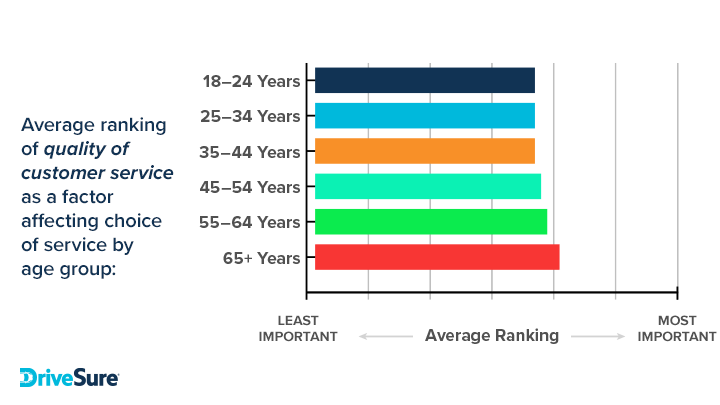
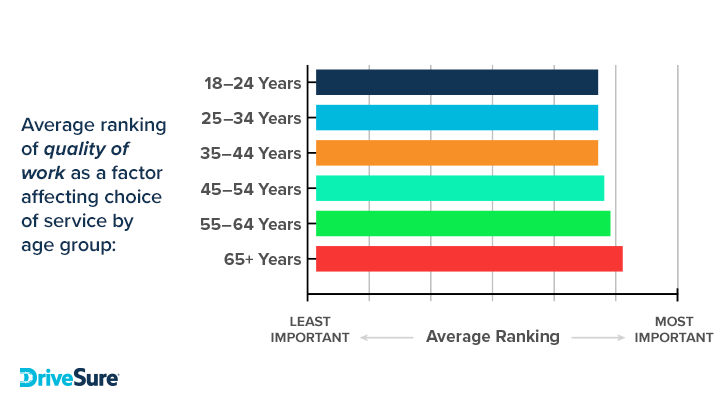
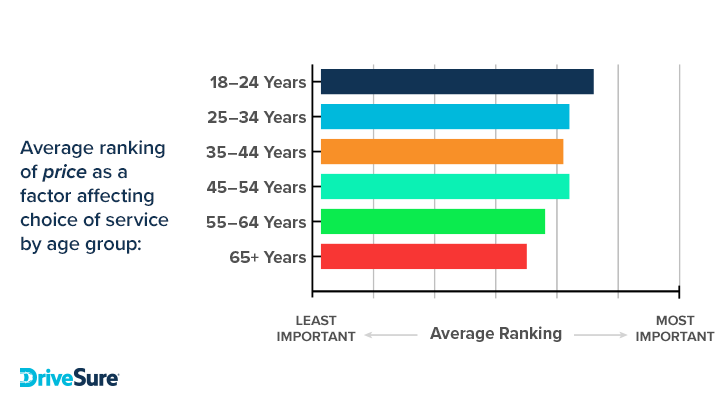
Because most dealership service departments already pride themselves on providing superior quality of work and customer service, this is reassuring for all of your customer age groups. Keep in mind though, that regardless of age or loyalty, many will look elsewhere for service after just one bad experience.
And while knowing that price is important to your younger segments underscores the threat your low-cost competitors pose, there are ways to mitigate this. Like ensuring your amenities meet the diverse needs of your customer base…
What service department amenities do your customers value most?
Customers 34 and younger value online appointment booking with vehicle pickup and delivery cracking their top three.
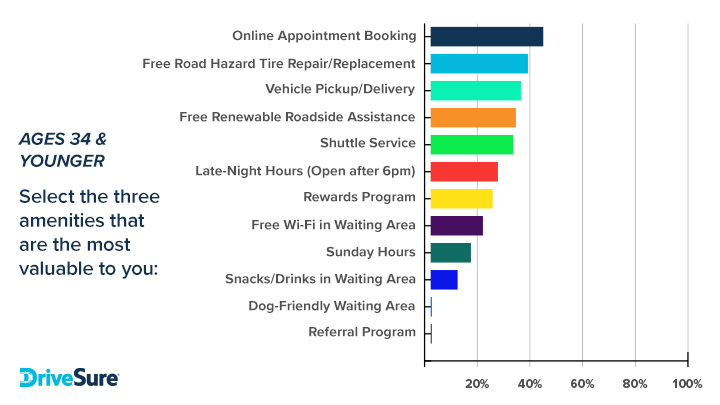
For those aged 35 to 54, vehicle pickup and delivery remained important, but shuttle service dropped significantly, highly valued by just 22 percent of people in that age group.
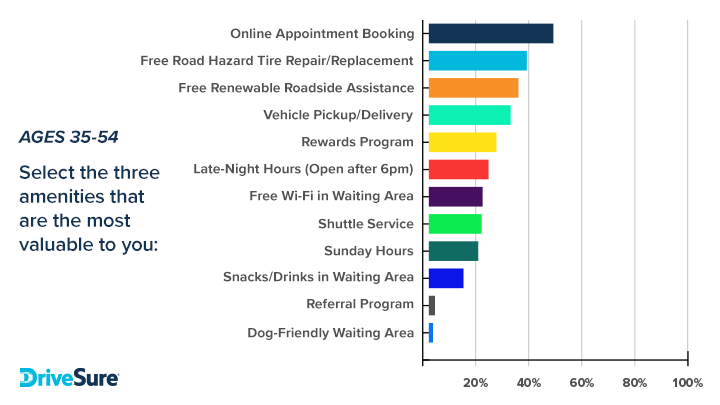
Understandably, shuttles jump back up to the third most valued amenity for those 55 and over.

In a bit of a surprising twist, respondents 55 and above have a strong preference for online appointment booking (41%) and even free Wi-Fi in the waiting area (26%).
Bottom line: vehicle pickup and delivery is an essential amenity—especially after COVID-19—and no matter the age of your customer, technology-related amenities are an attractive incentive that ranks high on the list of what your customers want.
What are the preferred communication channels between and during visits?
When it comes to communication between visits—be it general updates, news, or appointment reminders—email reigns supreme for all age groups, followed by texting.
For the 55+ age group, the difference is significant (60 percent prefer email and just 23 percent want to receive text messages).
But the gap narrows significantly for participants 34 and younger, with only four percentage points between the two options
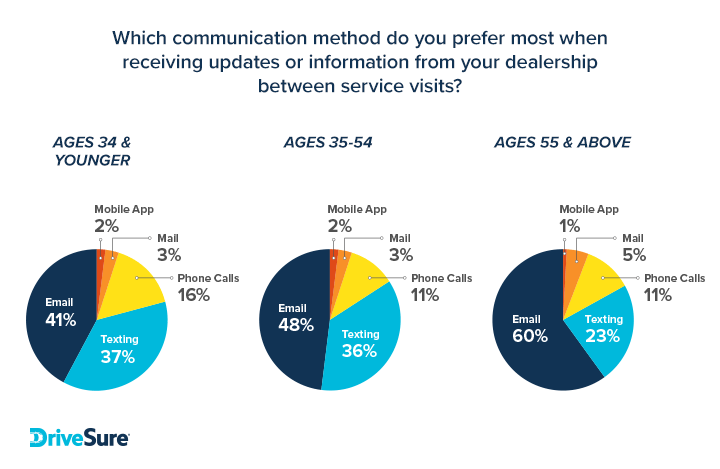
In regards to communication during visits, texting is the clear winner across the board.
A wide gap exists even for consumers 55 and older (the group with the highest portion of people who prefer calls). In this age group, over half still prefer text messages (54%), while only 27 percent prefer calls.
The (SMS) message here is loud and clear…
If you haven’t already, now is the time to fully embrace text messaging for communicating with customers.

Are your customers open to more modern forms of communication like smartphone apps?
As a matter of fact, they are. And while there is a predictable disparity between the level of enthusiasm among different age groups, an impressive 45 percent of consumers 55 and older said they are “likely” or “very likely” to download an app from your service department.
Unsurprisingly, the percentage of willing app participants jumps to about 60 percent for the younger segments.
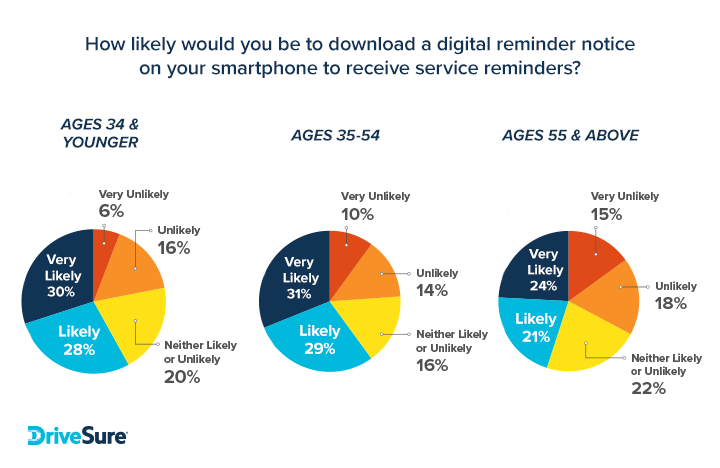
How Does Your Service Department Stack Up?
The good news is, there aren’t substantial deviations among service department customer preferences by age group. There are differences, though, and ensuring you accommodate and fill the gaps can make a big difference in the profitability of your service department.
Ultimately, we firmly believe that dealership service department customer service should be a relationship-based experience. The survey results certainly tell us that much, and if you focus on providing a superior (and personal) experience, customers of all generations are more likely to be satisfied.
For a much deeper dive and complete breakdown of the full survey results, get your copy of the Dealership Service Retention Report today.
The 2020 Dealership Service Retention Report
INSIGHTS FROM NEARLY 2,000 DEALERSHIP CUSTOMERS
Learn why customers choose to return to their dealership for service and why they don’t. Plus, we reveal your biggest opportunities for encouraging customer loyalty.
